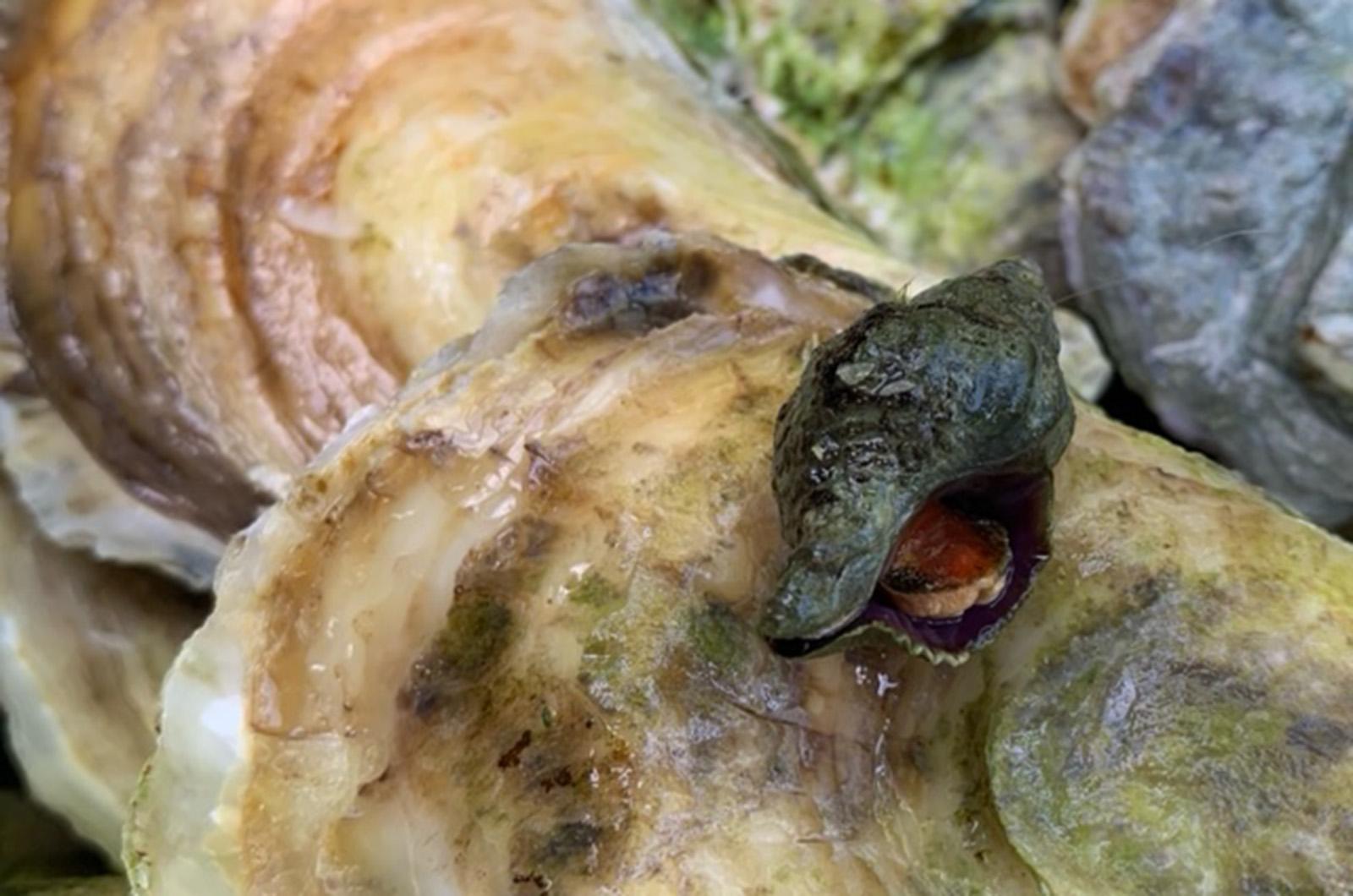You know the drill, or maybe you don’t.
This drill isn’t found in the tool box but can create a hole just as effectively. The eastern or Atlantic oyster drill is a marine mollusk that slides amongst us in the salty ponds, ocean and in places where shellfish thrive.
But don’t consider this gastropod a buddy to bivalves. It is a petit, if potent, predator that can confound the shellfish industry. At only an inch, it is clear that small can be mighty.
It doesn’t matter that oyster drills can’t move fast, since their prey is usually sessile, or motionless. Oysters are the favorite food of these drills, though they will also consume mussels, barnacles, others snails, crabs and other invertebrates.
Their method of munching oysters is almost malevolent. Oyster drills start with a scent, being attracted to the body odor of the bivalves. Once it decides on dinner, the drill begins by secreting mucous to soften the oyster’s shell. It will then drill a pin-sized hole with its radula or rasping tongue. Once the hole breaks through, the snail inserts its proboscis and secretes a muscle relaxer that will induce the oyster to open. Dinner is served and the oysters is eaten from the inside out.
The entire process takes up to eight hours, exemplifying the slow food concept.
Oyster drills prefer small oysters, called spat. In their 10-year lifetime, they can eat up to 3,000 oysters. Each drill is able to produce up to 1,000 eggs in a single spawning so they can quickly overtake oyster beds and cause mortality to a large number of oysters. The eggs of the drills are encased in orange vase-like structures that are secured to hard surfaces, including the oysters themselves. Likely you have seen these egg cases and wondered what they are.
Success for the oyster drill can mean failure for the oyster farmer. And this species’ ability to travel to other areas, often inadvertently, has been troubling.
English zoologist and ecologist Charles Sutherland Eaton noted that “the greatest agency of all that spreads marine animals to new corners of the world must be the business of oyster culture.” With our hunger for shellfish and affinity to send shellfish products far and wide, oyster drills have hitchhiked and become problematic invaders in Pacific, Gulf, and European waters.
In Texas an invasivore movement has emerged, leading chefs and shellfish producers to create a market to promote the consumption of these snails, and renaming them and comparing them to escargot. Another example of eat it to beat it.
While these shells were found in midden piles on Nantucket and Martha’s Vineyard, it is inconclusive as to whether they were eaten by indigenous people and later, colonists, or if their presence was a result of their affinity and cohabitation with oysters that were a well-known foodstuff.
Even legendary wild food advocate Euell Gibbons doesn’t speak of their consumption — and he rarely remained silent on any marine edible.
If we can get a gastronome movement turning the dinner tables on these gastropods, we may be able to help the populations of oysters, mussels, crabs and other shelled favorites. I remain curious and on the fence as to whether these snails are tools for trouble or tastes of the times.
Either way, the only choice is to drill down into the literature to find a recipe to prepare these all-digesting drills.
Suzan Bellincampi is Islands director for Felix Neck Wildlife Sanctuary in Edgartown and the Nantucket Wildlife Sanctuaries. She is also the author of Martha’s Vineyard: A Field Guide to Island Nature and The Nature of Martha’s Vineyard.




Comments (1)
Comments
Comment policy »